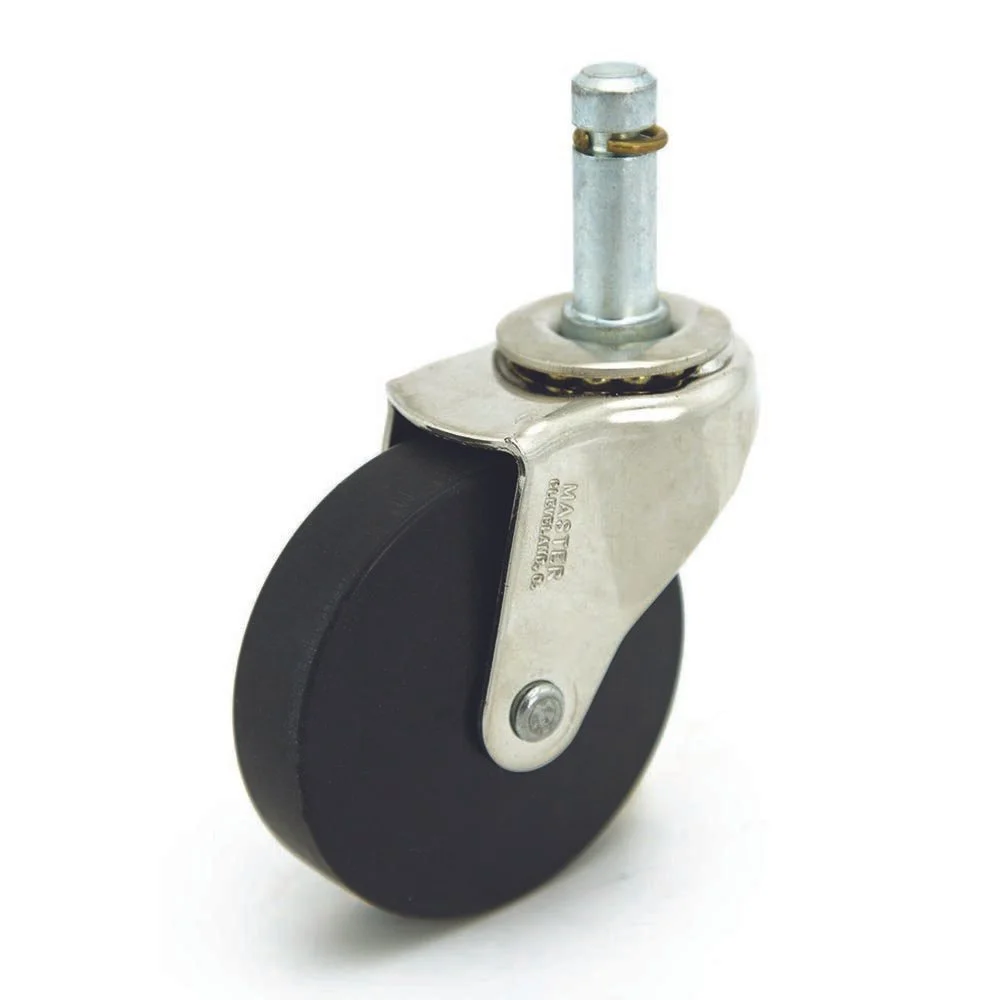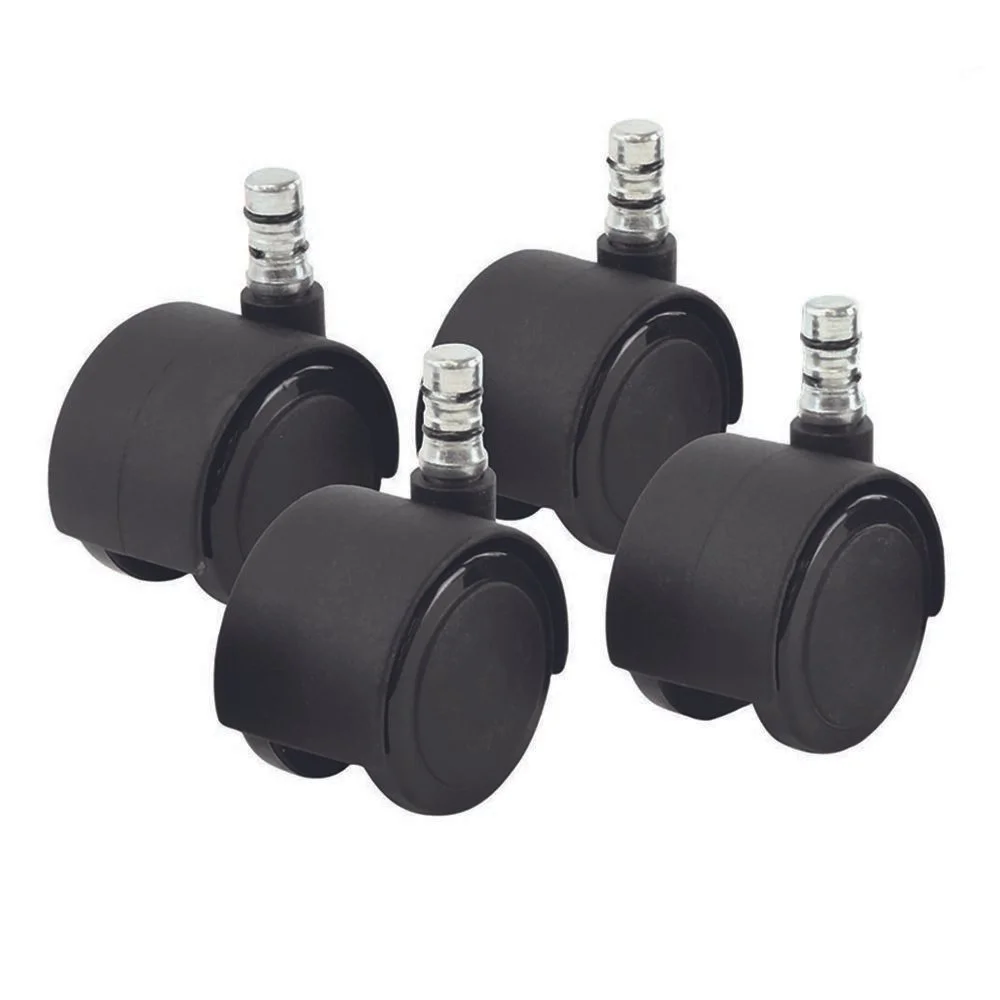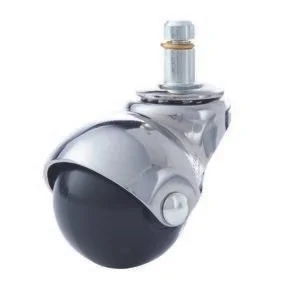How to Choose the Perfect Office Chair Casters: Protect Your Floors and Boost Productivity
Are you tired of struggling with a stubborn office chair that won't budge or, worse, leaves unsightly marks on your beautiful floors?
The secret to a smooth-gliding, floor-friendly chair lies in choosing the right casters. In this comprehensive guide, we'll help you select the perfect office chair wheels for your workspace, ensuring both comfort and floor protection.
The Importance of Choosing the Right Casters
About one third of our adult life is spent at work, so it makes sense to make our work area as comfortable and functional as possible. Office chair casters are an often-overlooked way to enhance workspace functionality. When you have the right casters for your environment you not only protect the surface of the floor, but you also experience the convenience of smoother movement, which contributes to workplace comfort. Who knew such a small part of your chair could make a big difference in your workday? We knew, and now you do too!
To help you choose the right caster for your office chair you’ll first need to understand the various caster types that are suitable for different flooring materials. For example, softer casters are better for hard surfaces, like hardwood and tile, while harder casters are recommended for soft surfaces, like carpet. More caster details to come, but in the meantime just remember the wise words of Paula Abdul when she sang “opposites attract,” i.e., the harder the floor, the softer the caster.
Types of Casters Available
Since there are a variety of caster types available, finding the best option for your office chair is key. When considering the flooring material, choose casters that are not only gentle to the surface of the floor but also enable the chair to move easily. Types of chair casters include:
Soft Rubber Casters
To prevent potential marking, marring, or scratches, soft rubber casters are the best option. Soft casters can also provide an effective grip to improve mobility while preventing sliding or skidding.
Best For: Hardwood or tile surfaces
Key Features: Floor protection, quiet, smooth rolling experience
Hard Plastic Casters
Hard casters provide better traction for smoother, easier chair movement on carpeted surfaces.
Best For: Carpeted surfaces
Key Features: Smooth gliding, durable
Metal Casters
Soft chair casters will prevent damage, improve stability and traction on uneven tile surfaces, and help reduce noise.
Best For: Concrete, industrial
Key Features: Heavy-duty, high weight capacity
Additional Considerations
Selecting the right casters for your office chair is about more than just floor protection and mobility—it’s an opportunity to optimize performance, extend product lifespan, and even contribute to sustainability. Below are three critical factors to consider when choosing casters.
Caster Size Matters
The size of your caster wheels significantly impacts their performance across different surfaces. Larger-diameter wheels (typically 2-3 inches for office chairs) roll more smoothly over uneven surfaces, soft flooring, or debris-covered areas. They also require less force to overcome obstacles like thresholds or carpet depressions, making them ideal for heavier chairs or high-friction environments like plush carpets.
Recommendations:
For hardwood or tile floors, opt for medium-sized casters (2 inches) for a balance of maneuverability and floor protection.
For thick carpets, larger wheels (3 inches or more) reduce friction and improve rolling efficiency.
For industrial settings with uneven terrain, oversized wheels (4+ inches) provide better stability and ease of movement.
Maintenance Tips for Longevity
Proper maintenance ensures your casters remain functional and durable over time. Neglecting upkeep can lead to reduced mobility, increased wear, and even damage to flooring. Regular care not only extends the lifespan of your casters but also saves money on replacements. Tips:
Clean Regularly: Remove dirt, hair, and debris from caster wheels using a damp cloth or brush.
Lubricate Bearings: Apply high-quality lubricants to swivel and wheel bearings every few months to ensure smooth rotation.
Inspect for Damage: Check wheels for cracks, flat spots, or loose hardware. Replace worn-out casters promptly.
Adjust Load Capacity: Avoid exceeding the weight limits of your casters to prevent premature wear.
Upgrade Your Office Chair Now - Shop Our Premium Caster Selection!
Now you understand how choosing the right caster type for your office chair not only impacts how easily the chair moves but can also protect the floor from potential damage. Whether your office consists of a carpeted cubicle arrangement or it’s an open-concept concrete warehouse, mobility is essential. Check out our caster selection and let us know if you have any questions. Our goal is for you to be as comfortable at work as possible!
Not sure which caster is right for you? Our prices are among the lowest online, so why not contact one of our experts for a personalized recommendation!




